If you haven’t used a pressure washer before, then please make sure you take a look at these videos which will help you get started and up and running in no time at all. Included also is a demo video for the setting up and operation of a Karcher Pressure washer.
A pressure washer is a powerful cleaning tool that can be used to clean a variety of surfaces and objects such as driveways, decks, cars, and outdoor furniture. However, it's important to use a pressure washer correctly to ensure safety and effectiveness so here's a step-by-step guide on how to use a pressure washer safely
Read the Manual
Before using a pressure washer, it's important to read the manual that comes with it. The manual will provide you with instructions on how to assemble and operate the pressure washer, as well as safety precautions and maintenance guidelines.
View also: Popular Weed killers here
Pressure Washer Video Tips Compilation
Video 1 - How to Use a Pressure Washer
Assemble the Pressure Washer
Once you have read the manual, assemble the pressure washer according to the instructions provided. This typically involves attaching the spray gun, wand, and hose to the unit.
Choose the Right Nozzle
Most pressure washers come with a set of interchangeable nozzles that can be used for different cleaning tasks. For example, a 0-degree nozzle produces a concentrated, high-pressure stream that is ideal for removing stubborn stains, while a 25-degree nozzle produces a wider, less intense spray that is suitable for general cleaning.
Connect the Water Supply
Connect the pressure washer to a water supply using a garden hose. Make sure that the water supply is turned on and that the hose is not kinked or twisted.
Turn on the Pressure Washer
Turn on the pressure washer and let it run for a few seconds to prime the pump. If your pressure washer has an electric motor, make sure that it is plugged into a grounded outlet.
Video 2 - How to set up and use a Pressure Washer Step by Step
Test the Pressure
Before starting to clean, test the pressure washer on a small, inconspicuous area to ensure that it is not too powerful for the surface you are cleaning. If the pressure is too high, switch to a wider nozzle or move the wand farther away from the surface.
Begin Cleaning
Once you have tested the pressure, you can begin cleaning. Hold the spray gun with both hands and move it back and forth in a sweeping motion, keeping the nozzle at a constant distance from the surface. Be careful not to aim the spray at people, pets, or delicate objects.
Read also: Popular Garden benches here
Rinse the Surface
After cleaning, rinse the surface thoroughly with water to remove any remaining soap or debris. Use a wider nozzle or lower pressure setting for this step.
Turn off the Pressure Washer
Once you have finished cleaning and rinsing, turn off the pressure washer and disconnect it from the water supply. Be sure to follow the manufacturer's instructions for storing the pressure washer. In addition, always exercise caution and wear appropriate protective gear such as goggles and gloves when using a pressure washer.
Video 3 - How to use a Kärcher Pressure Washer, Water butt and Suction Nozzle
Types of Pressure Washers
There are several different types of pressure washers on the market, each designed for specific cleaning tasks and these are the most common types of pressure washers you will find on sale in your stores
Electric Pressure Washers
Electric pressure washers are the most common type of pressure washer for home use. They are powered by electricity and are generally less powerful than gas-powered models, but they are also quieter and easier to maintain. Electric pressure washers are best suited for light to medium-duty cleaning tasks such as washing cars, decks, and outdoor furniture.
Gas-powered Pressure Washers
Gas-powered pressure washers are more powerful than electric models and are better suited for heavy-duty cleaning tasks such as removing paint or cleaning large areas like driveways. They are also more portable than electric models since they don't require an electrical outlet, but they are typically louder and require more maintenance.
Hot water Pressure Washers
Hot water pressure washers are designed to clean surfaces that require the use of hot water such as greasy surfaces or heavily soiled areas. They are typically more expensive than cold water pressure washers and require a fuel source to heat the water, but they are more effective at removing stubborn stains and dirt.
Video 4 – The Karcher K2 Pressure Washer demonstration
Commercial Pressure Washers
Commercial pressure washers are heavy-duty machines designed for professional use such as in industrial settings. They are typically gas-powered and produce very high water pressure, making them capable of removing the toughest dirt and grime from large surfaces such as buildings, heavy equipment, and concrete.
Handheld Pressure Washers
Handheld pressure washers are small, portable units that are ideal for quick cleaning tasks such as cleaning cars or outdoor furniture. They are typically battery-powered or electric and come with a variety of nozzles for different cleaning tasks.
Trailer-mounted Pressure Washers
Trailer-mounted pressure washers are large, heavy-duty machines mounted on a trailer for easy transport. They are typically used in commercial settings such as construction sites, large industrial facilities, or oil rigs.
Task Types
When choosing a pressure washer, it's important to consider the specific cleaning tasks you will be performing and the frequency of use. A professional cleaning company will require a high-pressure commercial-grade machine, while a homeowner may opt for a less powerful electric model for occasional use. Whatever the case may be, make sure to follow the manufacturer's instructions for safe and effective use of the pressure washer.
Read also: Popular Wheelbarrows here
Water Capacity and Water Pressures
The water capacity and water pressure of a pressure washer are important factors to consider when choosing a machine for a specific cleaning task and here's what you need to know about water capacity and water pressure and pressure washers
Water Capacity
The water capacity of a pressure washer is the amount of water that the machine can hold or use per minute. It is typically measured in gallons per minute (GPM) and can range from 1 GPM to 4 GPM or more for commercial-grade machines. A higher water capacity means that the pressure washer can clean larger areas more quickly, but it also means that the machine will consume more water.
Water Pressure
The water pressure of a pressure washer is the force with which the water is expelled from the nozzle. It is measured in pounds per square inch (PSI) and can range from 1000 PSI for low-powered electric models to over 4000 PSI for commercial-grade gas-powered machines. A higher water pressure means that the pressure washer can remove stubborn dirt and stains more easily, but it also means that the machine can be more dangerous if not used correctly.
Low vs High Power
When choosing a pressure washer, it's important to consider both the water capacity and water pressure to ensure that the machine is capable of handling the cleaning task.
For example, a low-powered electric pressure washer with a low GPM and PSI rating may be suitable for cleaning a car or patio furniture, but it may not be powerful enough to clean a large driveway or heavily soiled surface.
Similarly, a high-powered gas-powered pressure washer with a high GPM and PSI rating may be too powerful for delicate surfaces and can cause damage or injury if not used correctly.
Balance
It's also important to note that water pressure and water capacity can affect each other. For example, a machine with a high water pressure may have a lower water capacity since it expels water more quickly, and vice versa. Therefore, it's important to choose a pressure washer that balances both factors for the specific cleaning task at hand.
Read also: Popular Electric UK Lawnmowers
Community Feedback
Do you have any special tips yourself when it comes to using Pressure Washers? If so, please educate others in the wider community by leaving a comment in the comment box section provided below…
Related Reviews:
 Worx Pressure Washer Reviews
Worx Pressure Washer Reviews
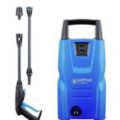 Nilfisk Pressure Washer Reviews – Compact Vs Titan
Nilfisk Pressure Washer Reviews – Compact Vs Titan
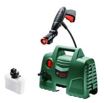 Bosch Pressure Washer Review – Compilation
Bosch Pressure Washer Review – Compilation
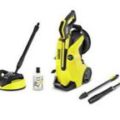 Karcher K4 Pressure Washer Reviews & FAQ’s
Karcher K4 Pressure Washer Reviews & FAQ’s
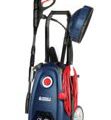 Spear & Jackson Pressure Washer Reviews – Compilation
Spear & Jackson Pressure Washer Reviews – Compilation
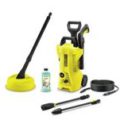 Karcher K2 Pressure Washer Reviews & FAQ’s
Karcher K2 Pressure Washer Reviews & FAQ’s
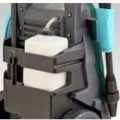 McGregor Pressure Washer Reviews – 1400W vs 1800W
McGregor Pressure Washer Reviews – 1400W vs 1800W


Recent Comments